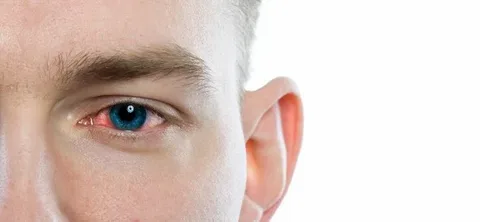Wearing contact lenses can be a convenient and comfortable alternative to glasses, but they also come with certain risks. One of the most significant concerns for contact lens users is the potential for eye infections, especially when sleeping in them. In this article, we’ll explore the risks associated with sleeping in contact lenses, the types of infections that can occur, preventive measures, and how to take care of your eyes.
Understanding Contact Lenses
Types of Contact Lenses
Before diving into the risks, it’s important to understand the different types of contact lenses available:
- Daily Wear Lenses: Designed for daily use, these lenses should be removed each night.
- Extended Wear Lenses: These lenses can be worn continuously for a week or more. However, they still carry risks if worn overnight.
- Disposable Lenses: Available in both daily and extended wear options, these lenses are meant to be replaced frequently.

How Contact Lenses Work
Contact lenses work by sitting directly on the surface of the eye, allowing for clearer vision without the obstruction of glasses. However, they also limit the amount of oxygen that reaches the cornea, which can lead to complications if not used properly.
The Risks of Sleeping in Contacts
Oxygen Deprivation
One of the primary risks of sleeping in contact lenses is oxygen deprivation. Your corneas need a constant supply of oxygen to stay healthy. When you wear contacts, especially overnight, the lenses can restrict airflow to the cornea, leading to swelling and discomfort.
Increased Bacterial Growth
Sleeping in contact lenses creates a moist environment that encourages bacterial growth. This increases the risk of infections like keratitis, an inflammation of the cornea that can be caused by bacteria, viruses, or fungi.
Eye Infections Explained
Eye infections can occur in various forms. Here are the most common types related to contact lens wear:
1. Bacterial Keratitis
Bacterial keratitis is a serious infection that can result from bacteria entering the eye through contaminated lenses. Symptoms include redness, pain, blurred vision, and discharge.
2. Fungal Infections
While less common, fungal infections can occur if the lens is contaminated with fungus, often from environmental sources. Symptoms may include redness, pain, and sensitivity to light.
3. Viral Infections
Viral infections, such as herpes simplex keratitis, can be aggravated by wearing contacts. These infections can lead to severe complications and require immediate medical attention.

Signs of an Eye Infection
Recognizing the early signs of an eye infection is crucial for effective treatment. Common symptoms include:
- Redness in the eye
- Increased sensitivity to light
- Blurred vision
- Discharge from the eye
- Pain or discomfort
If you experience any of these symptoms after sleeping in your contacts, it’s essential to consult an eye care professional promptly.
Preventive Measures
Taking proper care of your contact lenses and eyes can significantly reduce the risk of infections. Here are some essential tips:
1. Follow Your Eye Care Professional’s Advice
Always adhere to the guidelines provided by your eye doctor regarding contact lens use. This includes how long to wear them and whether you can sleep in them.
2. Maintain Proper Hygiene
Before handling your contact lenses, wash your hands thoroughly with soap and water. Dry them with a lint-free towel to avoid transferring any bacteria to your lenses.
3. Clean and Store Lenses Properly
Use the appropriate cleaning solution for your contact lenses and store them in a clean case. Replace the solution daily and clean your case regularly.
4. Avoid Sleeping in Contacts
If your lenses are not designed for overnight wear, remove them before sleeping. If you often forget, consider setting reminders or using daily disposable lenses.
5. Schedule Regular Eye Exams
Regular check-ups with your eye doctor can help detect issues before they become serious. Your doctor can provide personalized advice based on your eye health and lifestyle.
What to Do If You Experience Symptoms
If you start experiencing symptoms of an eye infection, follow these steps:
- Remove Your Contacts: Take out your lenses immediately to minimize further irritation.
- Avoid Rubbing Your Eyes: This can exacerbate the issue and introduce more bacteria.
- Seek Professional Help: Contact your eye care provider for advice and treatment options.
- Follow Treatment Recommendations: If prescribed medication, follow the instructions closely to ensure a full recovery.

Conclusion
Sleeping in contact lenses can increase the risk of eye infections and other complications. Understanding the types of lenses, the associated risks, and the signs of infections can help you maintain good eye health. Always follow your eye care professional’s advice and prioritize hygiene to protect your eyes.
By being proactive and informed, you can enjoy the benefits of contact lenses while minimizing the risks. If you ever have doubts or concerns, don’t hesitate to reach out to your eye care provider for guidance.
